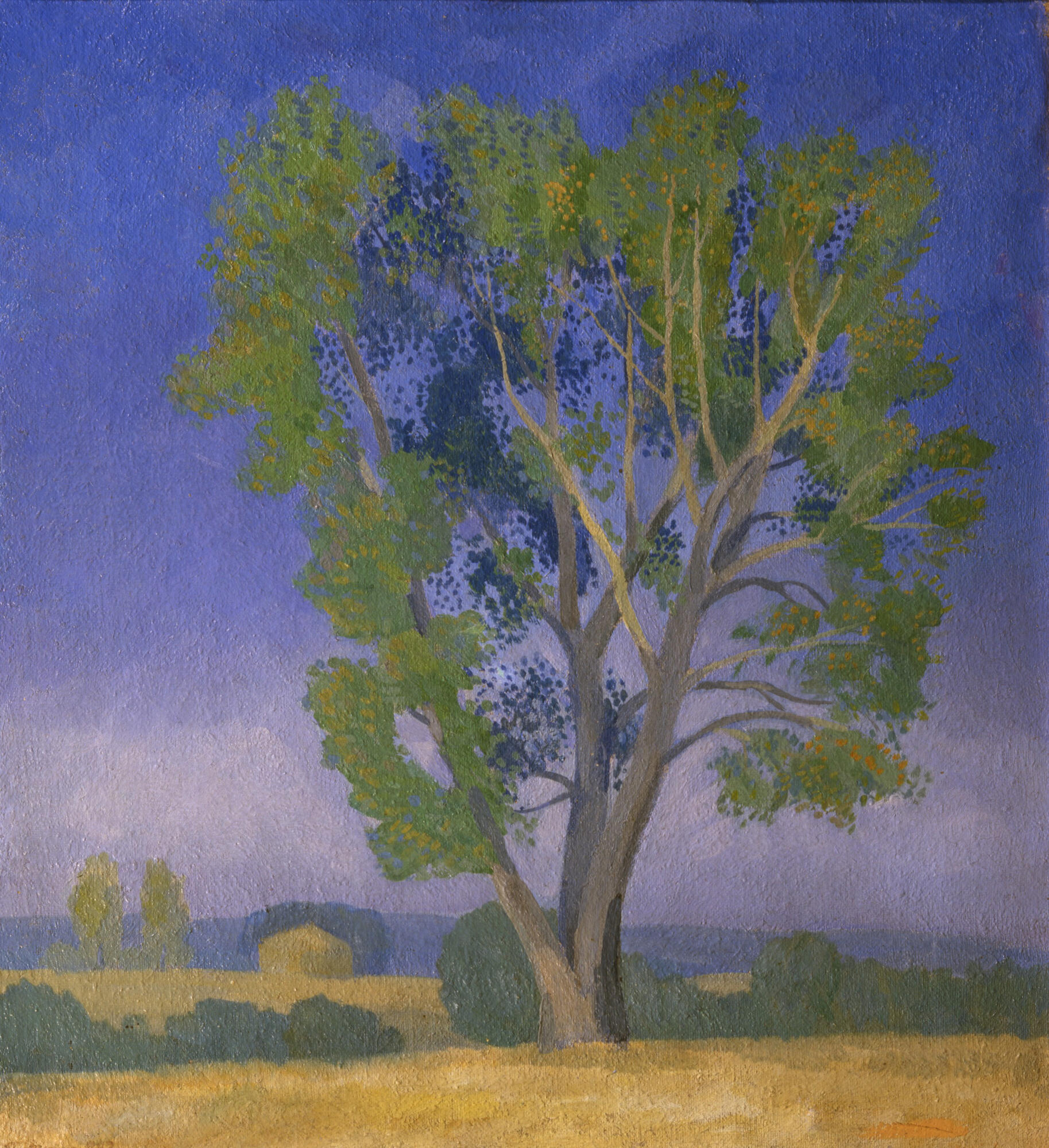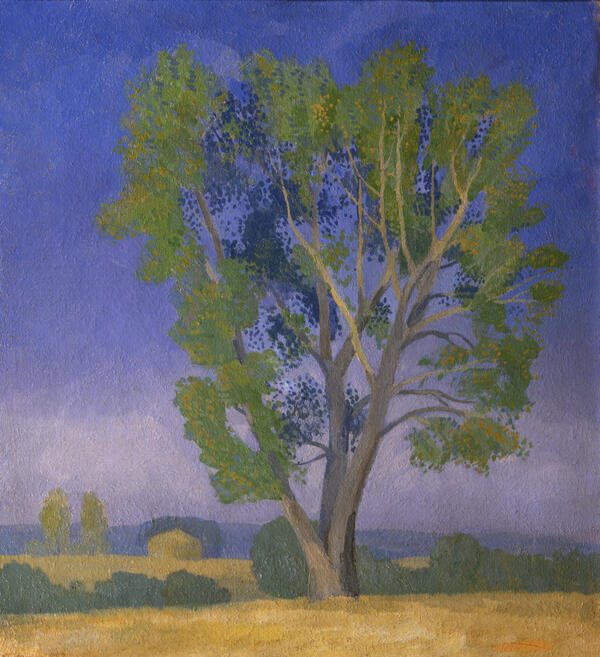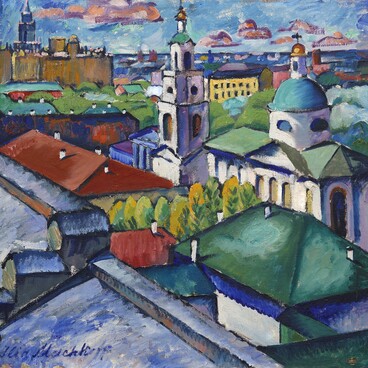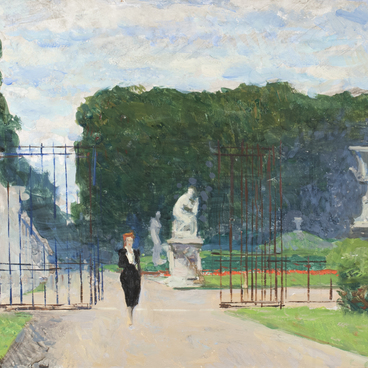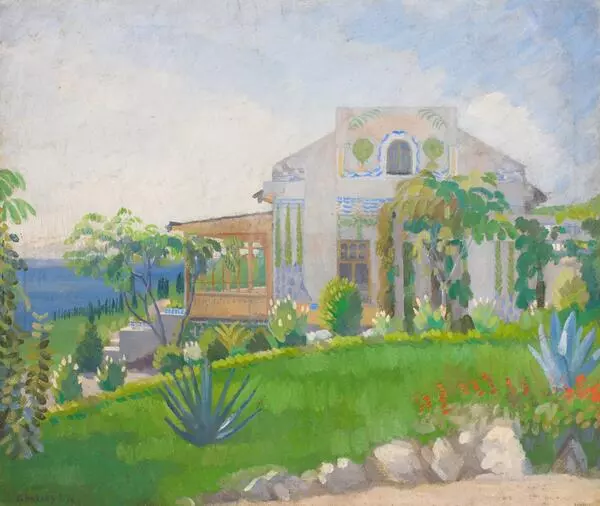The artwork by one of the most subtle and moving landscape artists from the first third of the twentieth century, Petr Utkin, had a huge influence on how the ‘Saratov school of painting’ came into being. This original artist was one of the founders of the ‘Blue Rose’ association, whose activities became the last - and very significant - flurry of figurative symbolism in Europe. The outskirts of Saratov, always quite easily recognizable, are the theme of almost all his works from that time. In the painting Cottonwood Poplar, something that has come to symbolize the Saratov landscape, an unpretentious motive is transformed into a deep, poetic image of nature.
The cottonwood poplar was the name of the black poplar, which grows to a larger size than its counterparts, has a strong trunk with a girth two or three times bigger, and looks most majestic in flat places, near lakes that overflow in the springtime.
In the landscape, Utkin presents it as a symbol of the beauty in the nature around Saratov. In the foreground of the picture is a tree that occupies most of the canvas. Its lilac silver, thin trunks are directed upwards with the smooth, melodious lines of the branches, ending in soft green foliage. It envelops the black poplar in a haze, against the background of a bright azure sky. Above the ground in front of the horizon, a foggy haze rises from both sides toward the tree, rises along the trunks, penetrates between the branches, and pulls up to the sky.
Austere architectonics, graceful drawing, and the ringing blueness combined with gentle tones - everything is subordinated to one melody. The picturesque structure of the work is intrinsically musical. The artist had an amazing ability to hear the music of nature, to recreate its soul on his canvases.
A wonderful story told by his student, David Zagoskin, has remained with us: ‘There are tall, slender poplars in Saratov. Their branches are directed towards the sky. A powerful wind. Twilight. Poplars sway, groan, and rustle, bending over even more, almost lying on the ground. The yellowed leaves swirl fearfully in the air, bouncing on the panel. Petr Savvich, in plaid trousers that tightly fit his thin legs, in a short shantung jacket, whistling, raising his thin beard, listens to the autumn’. Dreamy sadness, subtle lyricism, and a special spiritual tonality set apart Petr Utkin’s work Cottonwood Poplar, where we see the deliberate indistinctness of color, and the soft haze. The image here, of course, is metaphorical, although it is perceived as perfectly natural.
The cottonwood poplar was the name of the black poplar, which grows to a larger size than its counterparts, has a strong trunk with a girth two or three times bigger, and looks most majestic in flat places, near lakes that overflow in the springtime.
In the landscape, Utkin presents it as a symbol of the beauty in the nature around Saratov. In the foreground of the picture is a tree that occupies most of the canvas. Its lilac silver, thin trunks are directed upwards with the smooth, melodious lines of the branches, ending in soft green foliage. It envelops the black poplar in a haze, against the background of a bright azure sky. Above the ground in front of the horizon, a foggy haze rises from both sides toward the tree, rises along the trunks, penetrates between the branches, and pulls up to the sky.
Austere architectonics, graceful drawing, and the ringing blueness combined with gentle tones - everything is subordinated to one melody. The picturesque structure of the work is intrinsically musical. The artist had an amazing ability to hear the music of nature, to recreate its soul on his canvases.
A wonderful story told by his student, David Zagoskin, has remained with us: ‘There are tall, slender poplars in Saratov. Their branches are directed towards the sky. A powerful wind. Twilight. Poplars sway, groan, and rustle, bending over even more, almost lying on the ground. The yellowed leaves swirl fearfully in the air, bouncing on the panel. Petr Savvich, in plaid trousers that tightly fit his thin legs, in a short shantung jacket, whistling, raising his thin beard, listens to the autumn’. Dreamy sadness, subtle lyricism, and a special spiritual tonality set apart Petr Utkin’s work Cottonwood Poplar, where we see the deliberate indistinctness of color, and the soft haze. The image here, of course, is metaphorical, although it is perceived as perfectly natural.
